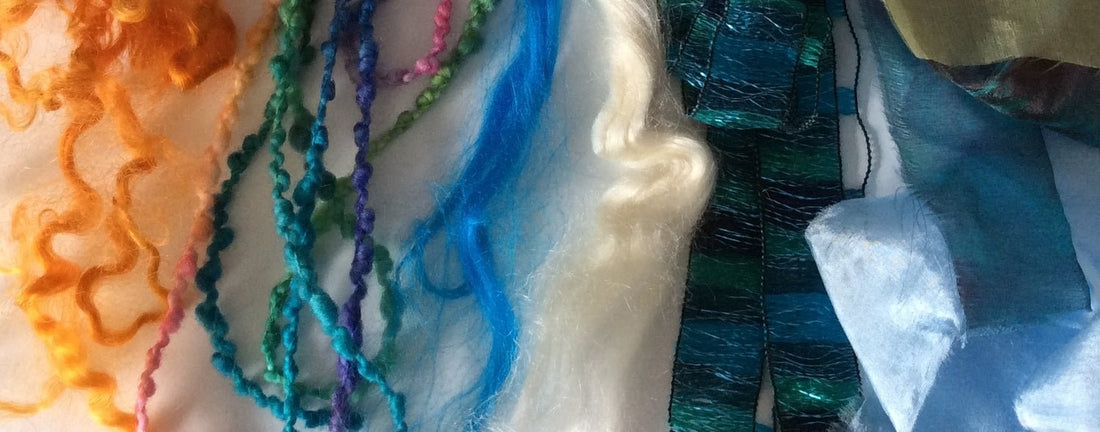"These are beautiful! So, what is this fabric?"
That is the most common question I hear when I sell at craft shows. What is this? While it's growing in popularity, nuno felting is not something most people are familiar with. The look and texture may be unlike anything they have ever seen. Every felter has their own way of doing things. Being self-taught, I can't with any authority say, "This is how it's done." What I can tell you is what goes into the making of a Sherri O scarf. Today, I will show you the building blocks of a typical scarf of mine. In later posts, I will share more about my process and how these parts literally come together to make the finished product.
There are three basic parts to a scarf, a base fabric (usually silk), wool or other animal fiber (cashmere, alpaca, mohair), and some kind of embellishment.




Next, I layer wisps of wool on top of the silk (more about the layering process in a future post). Merino, which is the finest and softest wool, is my wool of choice (above right), but I often use a blend of merino, silk, and bamboo fibers (above center). Silk and bamboo fibers will not felt on their own, but when mixed with merino they increase the luster and softness of the finished scarf. This is where the design of the scarf takes shape. Different colors of wool (above left) are combined and placed on the silk to create the desired effect. The thicker the layer of wool, the heavier and stiffer the scarf will be. I try to keep my scarves light and pliable, and therefore use a very fine layer of wool.

Finally, I add embellishments that compliment the design and give the scarf that extra "something." Some embellishments I use include (from left to right, above) curly wool locks, chunky yarn, bamboo fibers, silk fibers, ribbon, and dyed silk scraps.
